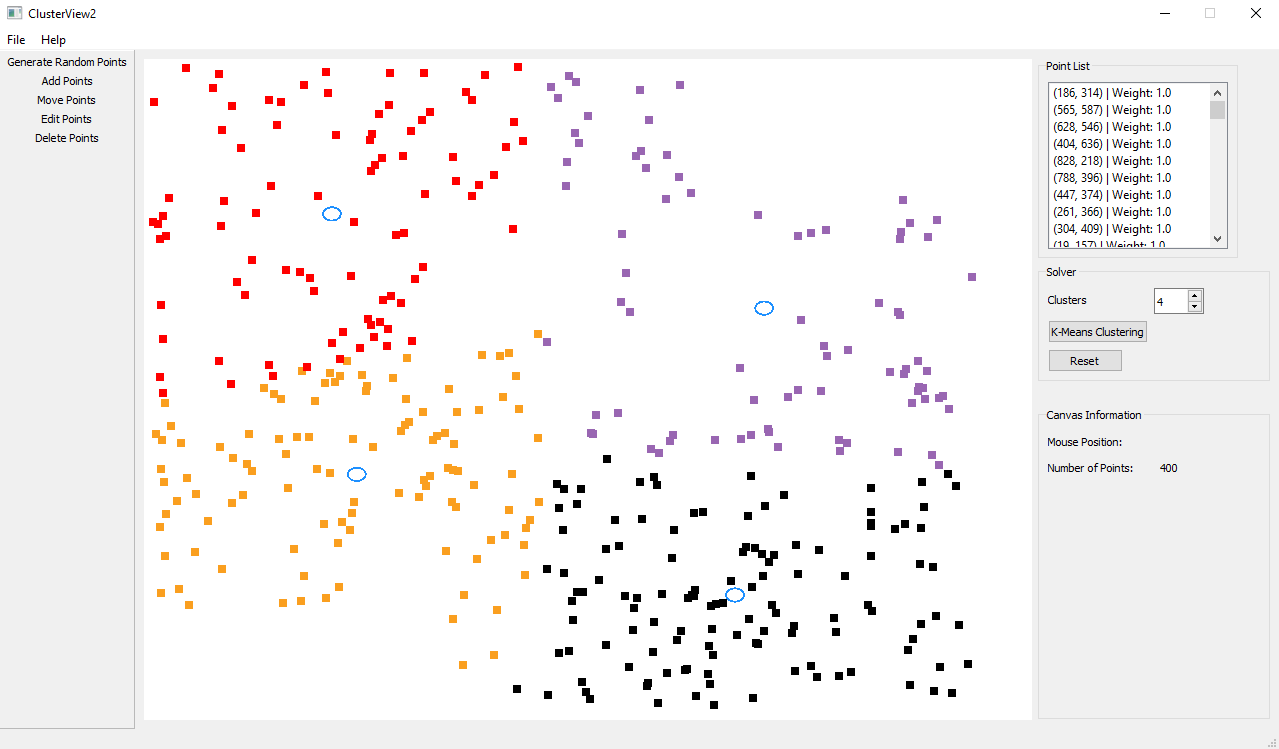You can not select more than 25 topics
Topics must start with a letter or number, can include dashes ('-') and can be up to 35 characters long.
|
|
6 years ago | |
|---|---|---|
| clusterview2 | 6 years ago | |
| .gitignore | 6 years ago | |
| README.md | 6 years ago | |
| clusterview2.py | 6 years ago | |
| clusterview2.ui | 6 years ago | |
| clusterview2_ui.py | 6 years ago | |
| example.PNG | 6 years ago | |
| main_window.py | 6 years ago | |
| requirements-dev.txt | 6 years ago | |
| requirements.txt | 6 years ago | |
| setup.cfg | 6 years ago | |
README.md
clusterview2
The sequel to clusterview. Built around the point and cluster structure of the kmeans project, aims to improve upon the design and structural weakness of clusterview and add many interesting interactive ways to explore k-means.
Usage
First install the necessary packages:
pip install -r requirements.txt
Then launch clusterview2 using:
python clusterview2.py
from the root directory.
Development
Make sure to install the development requirements using pip install -r requirements-dev.txt. This will install
all main requirements as well as useful testing and linting tools.
Regenerating the UI
After modifying the *.ui file in Qt Designer run
pyuic5 clusterview2.ui -o clusterview2_ui.py
to regenerate the UI python file.
